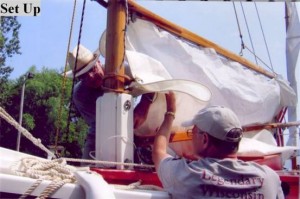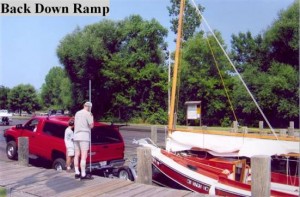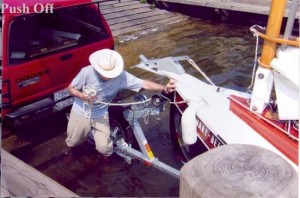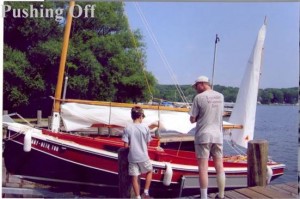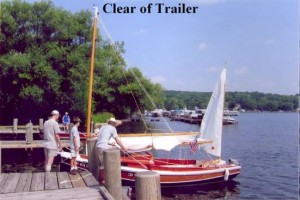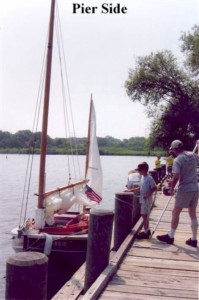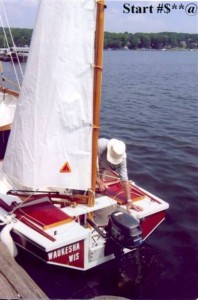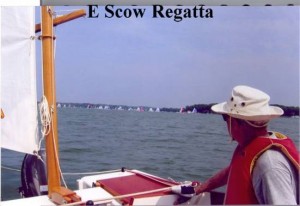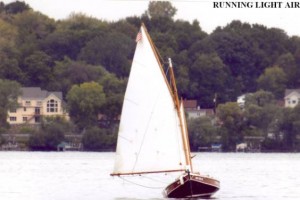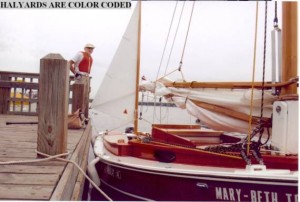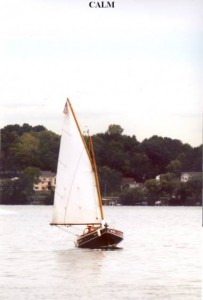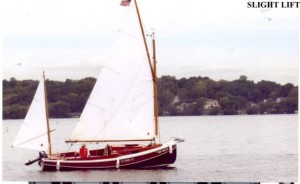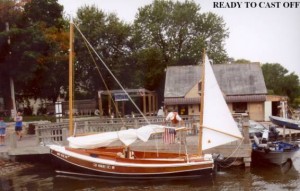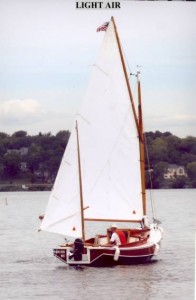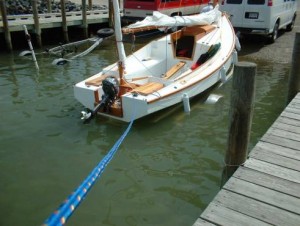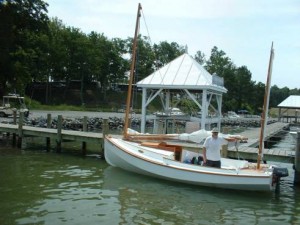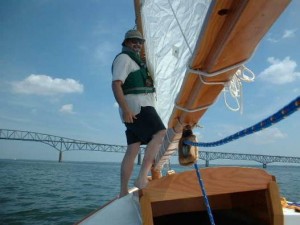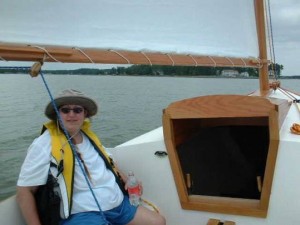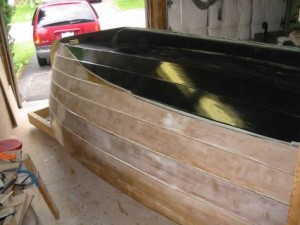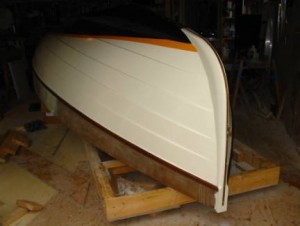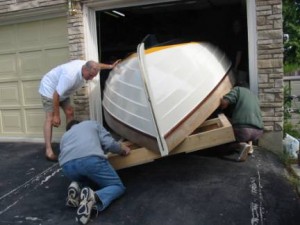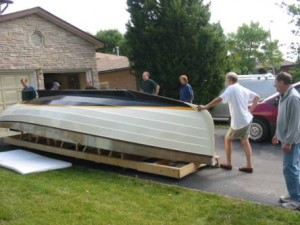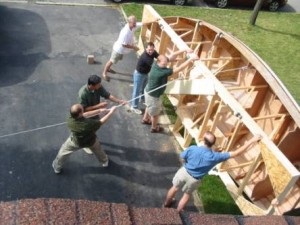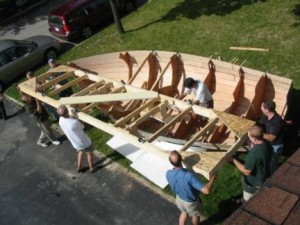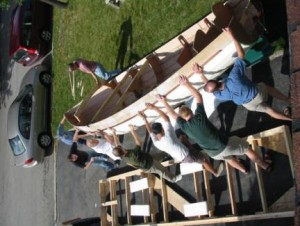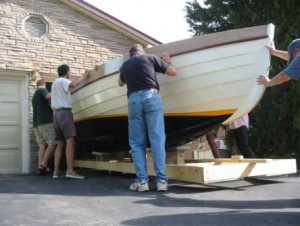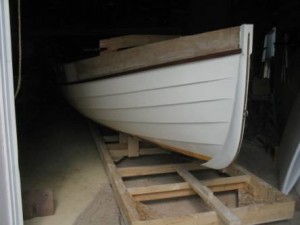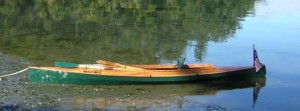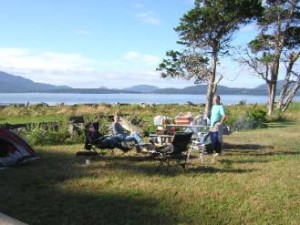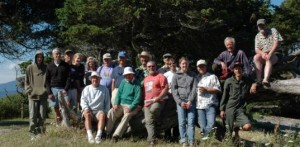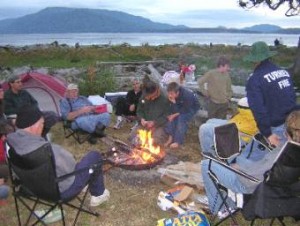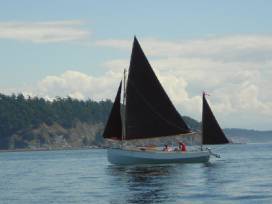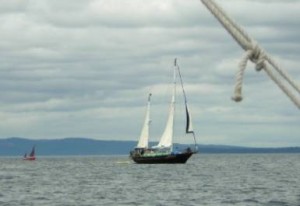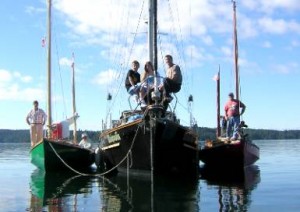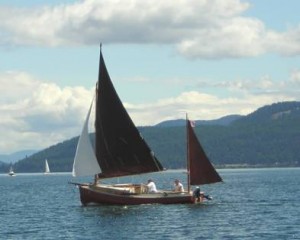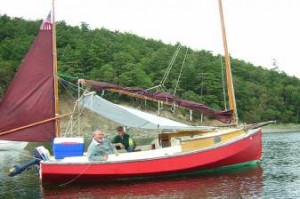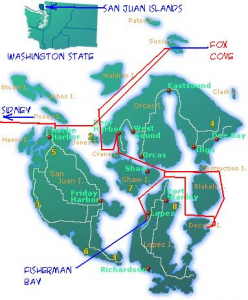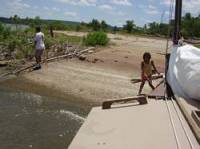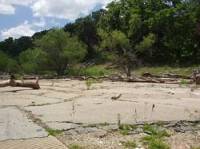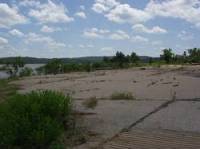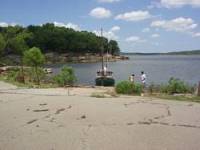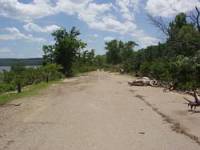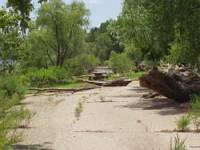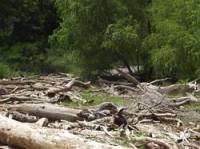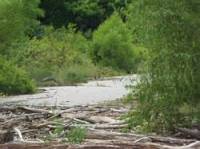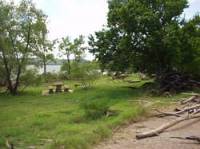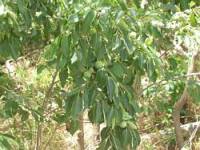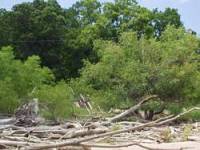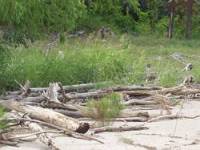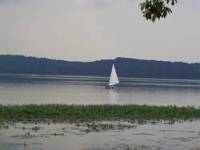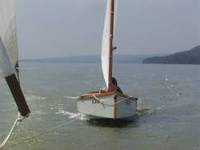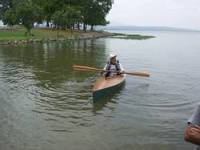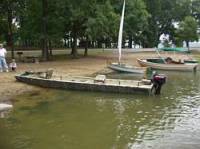News, questions, and boats for sale.
News:
| Lots of good contributions this issue. Been awhile since the last one, been busy, very busy. Franticaly putting in a shop and making room in house for what a friend of mine calls my re-wife.
No burning questions pending, and no boats for sale that I know of. Enjoy the issue, and happy holidays Chebacco Richard |
Questions:
Chebacco’s for sale:
***
Some Pictures – David Nedder
I have plenty of coaches.
Due to our drought conditions, the lake level is about 12″ below normal. The anchor holder looks a bit off, but when I let go of the anchor rode,down it goes down immediately. The anchor can remain installed while trailering.
Normally the boat floats off of the trailer at this launch site.
Now ready to swing around to the pier.
Pier Side.jpg
My iron wind is somewhat recalcitrant.
The Pewaukee Lack Yacht was holding a regatta that day. Mid August my brother and I took our families out to Pewaukee Lake for a cruise. The winds were moderate 5-10 MPH with an occasional gust to 12. Since my wife is not an enthusiastic sailor, I keep the pucker factor as low as possible. In moderate wind I can seat my guests so that the only ballast I shift is myself. This makes for an enjoyable cruise.
Pewaukee lake is about 5-6 miles long and about 1.5 miles at its widest. It has small islands and the winds tend to swirl and take a somewhat circular path. I can set the main and mizzen for neutral helm and “Mary-Beth, too” will sail in a large arc for about 30-40 minutes before changing tack.
Attached are some pictures taken of the “Mary Beth too” sailing.
<palign=”left”>It was light air on Pewaukee Lake at the end of August. The photographer is Lloyd Schultz of Madison, WI. He can take beautiful pictures on an overcast day.
Happy New Year.
Regards
D.J.Neder.
***
Photos – Bill Jones
Hello Richard,
Here are a few photos for the next edition of the Chebacco News. The Carol Leigh was started in September 2003 and launched June 2005. I have not had her out much due to weather and schedule conflicts, but the little time on the water we have had has been quite enjoyable. Some quick GPS readings indicated a maximum speed of 7 knots once the wind kicked up a little.
There are lots of construction photos and notes at www.people.vcu.edu/~wmjones
Construction is of ½ inch marine fir ply and mainly douglas fir dimensional lumber. The hatch covers and CB trunk brightwork is white oak.
Preparing to pull out of the fine facilities at the Grey’s Point Campground in Topping, Va.
Here we are approaching the mouth of the Rappahannock River as it enters the Chesapeake Bay. We chose this point for the naming ceremony as it was too busy at the dock. Visible in the foreground is one of the wooden blocks I made for the Carol Leigh.
A nice shot of the fleet admiral relaxing on her namesake flagship.
***
Lapstrake Raised Deck Build update – Ben Ho
Hello Richard,
Almost 18 months after I ordered the Chebacco plan from PCB, and one year after I cut the first piece of marine plywood, my lapstrake hull is finally finished and turned over. The hull was completed in June, and then sanding, fairing, epoxying, painting…took the whole summer. The unusual tropical heat we had this summer in Ontario didn’t help. Here are some pictures.
Hull is done, waterline struck with a laser pointer, working on the bottom finish with epoxy mixed with graphite and green pigment. As it turned out, the black from the graphite pretty well overrides the green, so the resulting color is very-dark green. It took a few tries before I got the hang of rolling on epoxy with a smooth finish.
Here’s what the hull looks like after 5 coats of epoxy, 2 coats of primer, and 2 coats of Interlux paint. I use System Three for epoxy and primer. The primer is wonderful stuff – it hides small imperfection well and sands easily. The sheer strake is left unpainted.
The big moment! The turn-over crew is preparing to get the hull out from the garage. The widest part is about 1” wider than the garage, so the whole setup needs to be tilted first.
The hull is built on a strong-back with casters, so it rolls around easily.
With six guys it was surprisingly easy to lift it up by 90 degrees. The safety rope prevents it from accidentally rolled all the way. The frame and temporary molds are still solidly attached to the hull to provide rigidity.
Roll-over complete, the hull is sitting on nice soft grass. Now the frame is taken off….
And the hull lifted up and put back on the frame, right side up!
And pushed back into the garage.
And ready for the interior work. Now the fun begins!!
***
Super Sail – Charles Gottfried
While there is no question that Bolger’s Chebaccos are among the finest sailing, most beautiful and most versatile boats in the (known) world, that’s not to say improvements can’t be made. I was recently persuaded to enter my boat in the Shipyard Raid, a staged race from Gabriola Island, BC, to Pt. Townsend, WA., and decided that I’d attempt to optimize a few things to squeeze that last bit of speed out of Full Gallop, my sheet ply chebacco. The first thing that came to mind was: More Sail!
Figure 1 – Full Gallop at Sucia Island
An optional jib is shown on the plans, approximately 25 square feet in area, and recommended to be set flying from the stemhead. Since I had a perfectly lovely 2’ bowsprit fitted, primarily to carry an anchor, I decided that the standard jib would probably not set right, being carried too far forward. Additionally, others have reported that their jibs didn’t seem to enhance performance very much, if at all, and were a pain to set up. Some head scratching followed…
I didn’t have precise angles or sizes figured, but I did have the dimensions of the standard jib. Through calculations of center of resistance, center of effort, prismatic coefficient, and righting moment, along with making magic signs and uttering the sacred incantations, I expertly re-sized the stock jib sailplan.
Actually, I guessed.
I kept the leech and luff the same length, and increased the foot dimension, from 4’ to 8’. This increased the size of the sail to about 50 square feet, and helped move the center of effort (CE) for the sail back, to counter the effect of the bowsprit moving it forward. My intent was to keep the CE about the same, and since the sprit moved the CE forward 2’, the increase in the foot, to 8’ should move it back to about the same place, more or less. I hoped.
I spoke with the good folks at Sailrite, the sail kit manufacturers, with whom I have done business before. They’re experts on sails, kits, materials, and making things work well. Jeff Grant advised me that the standard jib arrangement on the standard boat probably didn’t work well because the ‘slot’ between the sail luff and the mast was so small that it probably channeled little wind to the mainsail, and may have even hindered the effectiveness. He further pointed out that, flown from the bowsprit, that problem would lessen, at least somewhat. The further forward from the mast the jib would set, the better for efficiency. It made sense.
Chebaccos’ front deck is tiny, especially if its pitching and rolling in a seaway. Since I didn’t want to have to try to stretch out to the end of the bowsprit to attach the sail to a forestay, I decided to set the sail ‘flying’. This involves incorporating the wire stay into the sail luff, instead of fastening it between the masthead and bowsprit. This wire-reinforced sail is then attached to halyards that hoist not only the top of the sail, but can pull in the tack as well, from a block on the end of the bowsprit. This let me lead halyards back to the cockpit, attach the sail tack and head, and haul it out to set on the sprit. Both top and bottom halyards can be tightened, and the sail is drawn as tight as possible. The sheets are rigged in the conventional manner, thru blocks lashed to eyes on the coachroof, and then to cleats. Now, with a little practice, I can set and strike the sail while standing in the opened hatchway, safe from spray and a potential swim from the foredeck.
Performance
I initially set the sail on a June afternoon with 8 mph sustained winds, with some gusts. It set perfectly the first time, and after messing about with temporary blocks to carry the sheets, I headed across the lake. It had been a while since my last sail, but I immediately felt the improvement in speed. Shortly, I was joined by a lazer sailor, who admired the boat, and, sailing next to me, coached me in fine-tuning the sail. The tweaks made some improvements, and were easily accommodated with the moveable blocks I’d put together (they were on loops of line that could be attached to coachroof or beam-mounted cleats). Eventually, I found that I could outsail the lazer on some points of sail, which surprised both of us “Hey, I’ve raced at the Lazer Nationals, and this is a fast boat. And you’re pulling away!”.
In hindsight, the sail could be made even larger, by as much as an additional 12”-16” on both the leech and luff. The 8’ foot seems about right, tho. I’m not certain how wise that much additional sail would be, except in very light winds. In the end, I’m pleased with the sail as it is, and even without the extra area, the improvements are noticeable. I can’t speak highly enough about the Sailrite folks – the kit was great, done quickly, and at just over $200, the price was right. Now, I’m just waiting to hear how good it looks from behind, as told to me by the other Shipyard raiders.
***
Sucia 2005, and a cruise through the San Juan Islands – Jamie Orr
It was a dark and stormy night….
And noon the day after wasn’t looking too hot either, as Dad and I stowed our gear in Wayward Lass, our faithful Chebacco, and backed her down into the waters of Sidney Channel. It was Friday, July 8th, and we were off to the 2005 Small Boat Rendezvous in the San Juan Islands. The weather forecast said we might get winds up to 25 knots, so we put in one reef just for luck.
But when we left the wind was still about 15 knots and was perfect for a beam reach to the northern tip of Sidney Spit, three miles away. We used this relatively sheltered stretch to get organized, and get into our foul weather suits as we expected some spray while crossing Haro Strait, between Sidney Island and the San Juans.
Sure enough, once we rounded the end of the spit, we started to feel the effect of the wind blowing unchecked up the Strait, and before long we had the second reef tied in. It was slow going for a while, sailing to windward over a bumpy sea. However, it didn’t last and by 1:45 we shook out both reefs and started to make better time. The log shows that our top speed was over 6 knots, but by the time we reached the entrance to Roche Harbor the wind was gone and we had to motor in to the customs dock, then out again for the second leg of our trip. (It’s about 10 miles from Sidney to Roche, and another 15 to Sucia. There is a rough map of the islands at the very end of this tale.)
The wind came back then, although not as strongly, and the tide was under us, so it didn’t take long to sail down Spieden Channel to President Channel, running northeast between Waldron and Orcas islands with Sucia visible right ahead. We still had the tide, as well as a southerly wind that was just right for the whole (unreefed) sail. The clouds rolled away and I crawled out of my damp foulies, but I had jumped the gun, and was putting them back on half an hour later. Still, it was nice to have a chance to air out, even briefly.
The rain came and went, but the wind stayed fairly steady, and we arrived at Sucia in the early evening. This year we were rendezvous-ing (is that a word?) in Fox Cove, but as we came through the entrance we saw only one boat on the beach, Jim Ballou’s Mill Creek kayak, with Jim standing on the grass above it, waving vigorously. He’d crossed from Orcas the morning before, and it had been so rough since then that he was wondering if anyone else was going to show up!
Jim Ballou’s Mill Creek kayak |
We didn’t realize it then, but others had already shown up. There were two or three keelboats moored in the bay that were part of our group, but as I recall, we didn’t meet their crews until the following day. These were, I think: Doug and Will from Olympia in their Ranger 23; Thea and Mike Schifsky in their “overgrown H-28”, Raven. And I believe Ryan Shellborn, with his children Thompson and Emily, was already there too, in his 37 foot steel ketch Makoolis.
And there were more coming – before nightfall, Greg and Shelley Stoll arrived in their MacGregor 21, Windisfree, accompanied by Andrew Linn in his Newport 16, Aurors. The final arrivals for the day were Jay Kammerzell and his son in their homebuilt Bolger Micro.
|
A view to the west, showing Greg and Shelley relaxing in their campsite, with Andrew Linn standing. |
My memory is hazy about who arrived when, but I think everyone else arrived on Saturday afternoon. In no particular order, they were:
Chuck Gottfried and Dean Bishop in Chuck’s Chebacco Full Gallop;
John Kohnen in his Footloose skiff, Pickle;
Frank Mabrey in his MFG runabout;
Randy Wheating in his Chebacco Bluster, with his wife Lisa and sons Jacob and Samuel;
Peter Binley and family in their newly-acquired San Juan 23, Java;
Ron Mueller in his 20 foot Jarcat; and
Bill and Sandy Childs in their 19 foot Bartender.
(I wasn’t thinking ahead, so I don’t have pictures of all of the15 boats in attendance. I’ve posted some at the end, just before the map – my thanks to John Kohnen for letting me use so many of his photos.)
|
And here we all are – isn’t that a happy looking bunch? (John Kohnen photo) |
Before everyone else arrived, some of us went out for a sail. Jim came along with Dad and I on Wayward Lass, and Windisfree and Aurors were also out. We patrolled between Sucia and Orcas, hoping to meet some of the Saturday arrivals, but were too early and were back in the cove for lunch before they came. The trip over was enough time on the water for most folks, and the rest of the afternoon and evening were spent socializing and admiring each others’ boats. The weather co-operated and we all had a fine time. Greg and Shelley Stoll’s campfire was a gathering point in the evening – I think about half the crews were camped ashore.
| Here’s some of the crowd sitting around the campfire as the day ends. |
Sunday dawned clear, with nearly everyone looking forward to a lazy day. However, Andrew had to leave that morning, to be back at work on Monday. Things were looking good as he left but a powerful headwind came up shortly after, causing him to have a very long day. His description of it is posted on the Western Oregon Messabout list, the URL appears at the end of this account. Meanwhile, the three Chebaccos, Bluster, Wayward Lass and Full Gallop, plus Jay in his Micro were out sailing together, a real Bolger crowd. We didn’t do any racing, though, we settled for just messing about.
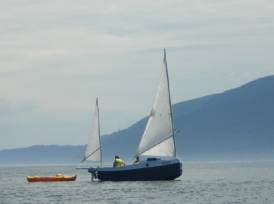 |
|
|
Here’s Randy and family in Bluster, and Jay and his son in their Micro. |
|
The wind, while we were outside the cove, was from the north. This, combined with a strong current running southeast kept us from sailing north around the island. It also discouraged us from going very far to the south as we would have had a tough time getting back the cove again, so there was no expedition to another island this year. No one seemed to miss it, though, perhaps because the trip over had been more demanding.
Monday morning, it was time for everyone to leave. One by one they said their goodbyes, pulled up their anchors or pushed off the beach and headed out of the cove. Jim Ballou was the first, we watched him as he paddled the two and a half miles to Orcas Island. Conditions were good for the crossing, but that Mill Creek looked awfully small out there! Most boats were headed southeast to the Lummi ramp or Bellingham, but Wayward Lass, Full Gallop and Makoolis were bound the other way, southwest down President Channel to start a few days cruise in the San Juans.
Pulling up our own anchor, we sailed out of the cove, then paused to watch the remainder of the group leaving. John Kohnen in Pickle, and Frank Mabrey in his MFG runabout, were the very last to go. They didn’t know it yet, but the same wind that made Andrew’s trip a tough slog was going to do the same for Monday’s sailors. See more URLs at the end for details.
With a final wave to John and Frank, our mini-fleet turned southwest and spread its wings. We had a moderate breeze from the south, but sailing close-hauled we were soon separated as each boat and helmsman followed their own path. Wayward Lass was to windward, while Full Gallop was slightly off the wind, presumably to keep her big jib drawing. Makoolis was in the rear – can’t remember why, but Ryan was more or less sailing single handed as his kids aren’t very big, and he had some big sails to handle.
I don’t know if you could call it a race between Wayward Lass and Full Gallop, but we were two similar boats going the same direction, so draw your own conclusions. I know that we in Wayward Lass were keeping a sharp eye on Full Gallop. Both Chebaccos were sailing well and as the wind strengthened, we started to wonder if we could take the time for a reef, or if it would put us irretrievably behind. Wayward Lass had a slight lead but as we drew closer to Waldron Island, it became apparent that the time for reefing was now, not later, so we pointed Wayward Lass into the wind to heave to and we reefed as quickly as we could.
With its cat-yawl rig, a Chebacco doesn’t heave to in the normal way. What I do, and I think most Chebacco sailors do, is point straight into the wind, and sheet the mizzen on the centreline, while letting the mainsheet run loose – it also helps to have the centreboard down. This will keep usually keep her pointing upwind, but allows her to sail backwards. I’ve clocked Wayward Lass at 3 knots, going dead astern, so it’s not a method you should use for riding out a storm. However, it’s more than adequate for reefing or for finding that hidden thermos for a hot drink. One other thing, the rudder should be centred as well, or the boat will veer off to one side or the other. I do this in Wayward Lass by dropping the tiller into a slot cut in the floor boards for the purpose.
Back to President Channel — Full Gallop had stopped to take in a reef too, so our relative positions were unchanged. Wayward Lass was now sailing more easily although there was still some spray flying at times. Looking back at Makoolis, we could see she had heaved to as well, presumably also to reef. Ryan confirmed this later, saying his crew preferred not to sail at too great an angle. Working on his own in that big ketch made reefing a longer job, so Makoolis fell behind before she started sailing again.
Meanwhile, we were now well into the channel between Waldron and Orcas, with Waldron Island to leeward. We could soon see that Wayward Lass was going to get through without tacking, but Full Gallop, being to leeward, had to tack out towards the centre of the channel, putting her well behind. (However, Full Gallop exacted a terrible revenge later in the summer, during the Shipyard Raid….)
From the eastern end of Waldron, we could see the passage between Jones and Orcas Islands directly south of us. We continued on to the southwest a little longer, until we thought we could point at the passage, then tacked. We found we hadn’t gone quite far enough, but the ebbing tide was pushing us still further southwest, so we hoped that would compensate for our early turn.
Makoolis had finished reefing some time before, and was now sailing down the channel towards us. I was amazed at how close to the wind she was sailing – I’d always understood that ketches were not close-winded at all. She was also making excellent speed through the water.
|
Here’s Makoolis storming along, with Full Gallop hot on her tail. |
As we approached the passage between Jones and Orcas (and yes, the tide had given us a nice boost to windward) and started tacking through it, Makoolis continued to gain at a great rate, tacking through unbelievably small angles. And I shouldn’t have believed it – Ryan had had the engine going ever since he stopped to reef. Just idling along, but it had let him sail much closer to the wind than he could have without it, and it boosted his speed as well. A great demonstration of effective motor-sailing, and he certainly had me fooled.
Passing Steep Point on Orcas, we came into sight of Deer Harbor and into more sheltered water. The wind dropped to about five knots, bringing an end to one of the truly great sails, one of the best we’ve had in Wayward Lass.
I wanted to go right into the dock to refill the gas and water tanks. We hadn’t used the engine much, but I had given away a gallon of gas at Sucia, and had spilled almost as much in the transfer (a siphon hose would be a useful (and green) thing to carry in future). The landward side of the fuel dock looked empty, so we slipped past another wharf sticking out from the shore and prepared to make a wide turn and come alongside.
As we turned, though, we saw the reason for all the space — a line of “wet paint” signs stood along the dock, so we aborted and headed back outside.
However, all was not lost. I’d seen a Chebacco-sized space at the very far end of the dock, the windward end. This would be a little harder to get into since the land not only turned the wind, but blocked most of it, leaving us only a light air from the north, dead on Wayward Lass’ nose as she edged in again. This meant we had to tack several times in the narrow space between the dock and the shore. As we got nearer our goal, we gained less and less on each tack, until we didn’t seem to make any progress. I think there must also have been a very slight current coming from further up the harbour that confounded our efforts.
In frustration, on the next tack towards the dock I let out several feet of mainsheet. Perhaps we had a gust of wind at the same time, I don’t know, but Wayward Lass surged forward towards the line of parked boats. I could feel weather helm and didn’t think we could turn downwind in time to clear the boats, so I went with the flow and put the helm down. Wayward Lass turned neatly into the wind and although the sails lost their drive, the speed we’d picked up carried us nicely up towards our berth. The burst of speed had also caught the eye of one of the dock attendants, who came a-running to stop us T-boning someone’s runabout, but no fending off was necessary and he only took our line as we squeezed past the last boat and up to the dock.
It’s all in the attitude – I just behaved as if I’d meant to do that. We even got a couple of compliments on our boat-handling. (Har!)
Once we were fueled and watered, we cast off again, still under sail (well, we had to keep up appearances, didn’t we?). Makoolis had anchored by then, just south of the marina, and Full Gallop was rafted alongside. We did the same on the other side.
| Like a Mama Duck and a pair of fat ducklings.
On the green Chebacco, Jamie Orr standing, Les Orr sitting; in the middle, Thompson, Emily and Ryan Shellborn; and Chuck Gottfried on the right. Dean Bishop is behind the camera. Fine job there, Dean! |
The next day was calm, so we motored south and east from Deer Harbour. Shortly after we passed the village of Orcas, a gentle breeze came up, lasting long enough to carry us north around Shaw Island and down between Canoe Island and Flat Point on Lopez. The wind died away then, and since the tide was turning against us, we started engines again and motored the last mile or two into Fisherman Bay
| Here’s a shot of Full Gallop with her new jib. It didn’t seem to make a huge difference on this trip, but was very effective later in the Shipyard Raid – I guess Chuck got her all figured out in the interim!
It’s “set flying”, instead of being hanked to a headstay, so it’s harder to get a tight luff, necessary for effective windward work. |
Here I suffered a major disappointment. I’d heard great things about Holly B’s Bakery, and her cinnamon buns – imagine my shock when we learned that the bakery was closed on Tuesdays! We consoled ourselves with cinnamon treats at a restaurant instead, but it wasn’t the same. There’s definitely another trip to Fisherman Bay in my future!
On Wednesday morning, Ryan and his young crew turned Makoolis south towards Cattle Point, at the bottom of San Juan Island, to sail up the west shore looking for Orcas (the killer whales, not the village or the island.) Full Gallop and Wayward Lass went north instead, around the top of Lopez, then out into Rosario Strait to James Island. Both Chuck and I wanted to see James as it was one of the scheduled stops for the Shipyard Raid in September, and both Chebaccos were signed up. We anchored for a short time there, but it’s a poor anchorage, so we motored into the nearby sandy bay on Decatur Island. There we celebrated the sunset with margaritas and other tequila-based rituals. (The Raid didn’t use James either, in the end, but went south to Watmough Bight, a much better anchorage and a jumping off spot for the crossing to Port Townsend.)
|
Margaritaland!! aka Full Gallop with your hosts, Chuck and Dean |
We were nearing the end of our time. In the morning, we said goodbye to Full Gallop’s crew who were bound north and east to Bellingham Channel. It being calm, Wayward Lass motored north up the west side of Rosario Strait to Obstruction Pass then west through the islands again. As we neared the passage between Shaw and Orcas once more, a northerly wind came up and we finished the day with a good sail back to Deer Harbor.
The next morning, our last, was also calm and we started off under power again. We had a look in at Jones Island, another planned Raid stop and an attractive anchorage. A light wind came up from behind (the east) and we sailed slowly along the south side of Spieden Channel. Halfway through the channel, the wind grew confused, but eventually settled in the northwest and we were able to clear the channel before the tide turned. Then we had another slow sail across Haro Strait to just south of Forrest Island, near Sidney Island, where the wind finally left us and we started the motor again. A short time later we were officially back in Canada, ready to go home.
There was one small hiccup that I mention as a warning to others. I must have backed in too far when we launched the week before, and the salt water caused enough corrosion in that short time that the left rear wheel on my van wouldn’t turn.. I tried driving to force it loose, but it just scraped along so I called a tow truck to haul the van to Sidney Tire. The guys there took the wheel off, then whaled away on the brake drum (?) with a big mallet. My kind of mechanics! This freed things up in no time, and there was no damage to be found. They said it wasn’t worth charging for, so three cheers for Sidney Tire! We soon had Wayward Lass on the trailer, and that was the end of our San Juan adventure.
As it was last year, the Small Boat Rendezvous is well documented:
· Andrew Linn’s journey home is at http://groups.yahoo.com/group/MessaboutW/message/8482
· John Kohnen also described his trip http://groups.yahoo.com/group/MessaboutW/message/8475
· Randy Wheating’s account is in the July 16 Chebacco page (www.chebacco.com if you’re not reading this on the Chebacco page)
· Greg Stoll is publishing his story in Duckworks, the URL for the third part is http://www.duckworksmagazine.com/06/gatherings/sucia3/index.htm and this has links to the first two parts.
· While it’s not part of this story, I’ve mentioned the Shipyard Raid. You can read about it, and what is planned for 2006, at www.shipyardraid.ca/, which has links to published articles about it.
And here’s a few more photographs of some of the rendezvous boats:
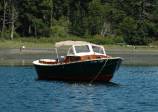 |
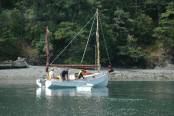 |
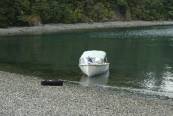 |
||
|
Bill’s Bartender (John Kohnen photo) |
Bluster and Fib (John Kohnen photo) |
Frank’s MGF Runabout (John Kohnen photo) |
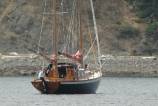 |
 |
 |
||
|
Mike and Thea’s Raven (John Kohnen photo) |
Jay’s Micro (John Kohnen photo) |
Ryan’s Makoolis (John Kohnen photo) |
| This is a map of the San Juan Islands I stole from www.gonorthwest.com, so go visit their site sometime. It shows the islands very nicely – Sidney, on Vancouver Island, is off to the west as shown. Lummi Island and Bellingham are southwest of Sucia. The red lines show Wayward Lass’ track, you’ll have to read the text to tell which way we’re going, and when, since we doubled back now and then. |
***
Messabouts, Buildings, and Boat storage – Richard Spelling
Here are some pictures from the Arkansas messabout this summer, and a few others. It went over much better than my attempts to have Oklahoma Messabouts. Probably because, on the face of it, I’m not a very sociable person. I like specific people just fine, but not strangers, and certainly not crowds of them. When I go to messabouts I have to force myself to talk to other boat builders, which is the whole reason for going to messabouts! Not a great formula for an event host. Phil Lea doesn’t have this problem. He even married a politician, or a “political advisor”. But then again, I married a preacher, so that probably doesn’t say a whole lot. There were more boats here than I have pictures of, and I only remember a few names. (I am absolutely HORRIBLE with names). So I apologize if I don’t name your boat in the picture. Feel free to send me an email and I will identify you and your boat. Anyway, to pictures.
Some pictures of the local abandoned park. You can sort of get to it by road, but the road leading down to the park has been closed off, so you can only get to within a mile or so of it. The best way is to go by water. It used to be tradition in our family to take the boat here on the 4th of July and watch the fireworks on the lake.
Phil Lea in his Junebug, in the hot dead calm on lake Dardanelle.
JM in his traditional double paddle boat pose
I was convinced this was a production boat. It’s not, it’s a homebuilt, custom, fiberglass job. Neat
cooling tower. LEXX in the for-ground
Max’s AF4. Took it for a spin, nice boat. Totally different than a sailboat. You can actually go places.
extreme carbon fiber double paddle canoe. Phil about to try it.
Phil tries it.
What does it say about the modern world when the most successful advertising for something on ebay is “not the cheap stuff you get at Wal-Mart”? My gray plastic “super tarp” bought on ebay, specifically “not cheap Wal-Mart tarp”, is actually holding up nicely. Better than the expensive nylon/Cordova one, even. Should get another year or two out of it.
By then I will have the overhang on the side of the shop built for the boat. Yes. I spent the last few months in a frantic effort (needed to get the machine shop out of the spare bedroom) to build a shop, something I’ve been planning for years. Collecting parts for, drawing layouts of, etc. It’s 18ft x 35ft with 10ft tall walls. Even put in insulation (which, oddly enough, you put on BEFORE you put the sheet metal on). It could have been bigger, but it’s “cozy”, and easy to heat and cool. The upside is that I now have a 10 foot tall wall that’s 35 feet long to build a shed roof onto, and enclose a nice spot to park the boat. I even have plans for the building’s first paint job, it’s going to get a camo finish, to match the winter woods. In the summer you can’t see the building from the road because of the leaves on the trees, but in the winter you can, sort of. Hence the paint job. Even have a camo key for the building!
And I’m stretching my metal storage shed out as well.
Why the need for all the additional space? Well, the wife is taking a sabbatical from the preaching business, and moving in with me. So we will then only have two homes to maintain! Then she is going to start looking for a position elsewhere. She calls is “sending her papers worldwide”.
My job is going fine, even if it’s 100 miles from my house. (and new shop!) I sometimes get frustrated with the red tape from working for Uncle, but other than that it’s going ok. (we have a saying at work. “They give you a spoon, and tell you to build a castle. Then they hide the spoon). I’m getting pretty disgusted with the prospects for a job in Tulsa, so if the wife finds something “worldwide”, I would be open to relocating.
As I told her when I re-married her, my only requirements are a place to park the boat, and a shop. A man must have priorities, after all!

